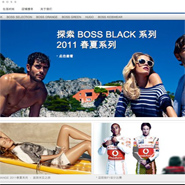- About
- Subscribe Now
- New York,
June 27, 2011

With U.S. consumers hesitant to start spending again, luxury brands should focus their marketing efforts in emerging markets such as China, Brazil, Russia and India, according to a study by Boston Consulting Group.
With economies struggling all over the world, a majority of global consumers are wary about spending their money, looking instead for value and deals. However, this sentiment does not ring true across the luxury segment, particularly in emerging markets.
“Luxury is still alive and present in the minds of consumers,” said Michael J. Silverstein, senior partner and managing director at BCG, Boston.
“It is particularly alive in China, where the newly rich and the children of the well-to-do are buying at a feverish pace, both at home and abroad,” he said.
BRICs and mortar
The Consumer Sentiment Survey was conducted by BCG in March and April.
The study spanned Australia, Brazil, Canada, China, India, Japan, Mexico, Russia, the United States, Denmark, Finland, France, Germany, Greece, Italy, Norway, Spain, Sweden, Switzerland, Turkey and Britain.
Overall consumer spending is still decreasing despite talk of an economic recovery.
According to the study more than half of U.S. respondents said that they have been personally affected by the downturn.
The study has concluded that anxiety over money and spending has increased globally, though on different scales that relate to the particular country’s economic position.
In emerging markets, for example, 36 percent of Chinese respondents and 19 percent of Indian respondents said that they plan to spend more on consumer goods in the near future.
A key trend found in the study was that more consumers, regardless of their location, find information about products and services online, often through social media outlets.
In addition, more consumers than ever showed an interest in green products that are safe and healthy for the environment.
Bullish in China shop
Despite these findings, luxury brands should not be overly concerned, according to Mr. Silverstein.
Luxury consumers, who are generally the top 20 percent of households, still have the money to buy luxury items.
“Great luxury brands are prospering in tough economic times through innovation, differentiation, consistent and predictable category expansion,” Mr. Silverstein said.
Economic struggles may be causing luxury brands to lose aspirational consumers, but the majority of consistent luxury customers just need to be intrigued by the brand.
As for brands wishing to expand, emerging markets hold the key.
“In that market [China], the growth is beyond the tier one cities and into the secondary markets,” Mr. Silverstein said.
“Covering China used to be possible with a half-dozen outlets, but in the very near future it will take 200,” he said.
Russia and Brazil are also markets that luxury brands should keep their eye on, per Mr. Silverstein.
What would Mr. Silverstein do if he were a luxury brand CEO?
“I'd be in China in a very big way,” Mr. Silverstein said. “I would also expand my ecommerce capability dramatically, making the full assortment open to the world.
“It is about spectacular brand building, flash and brand catchet,” he said.
Final take
Kayla Hutzler, editorial assistant on Luxury Daily, New York
Share your thoughts. Click here